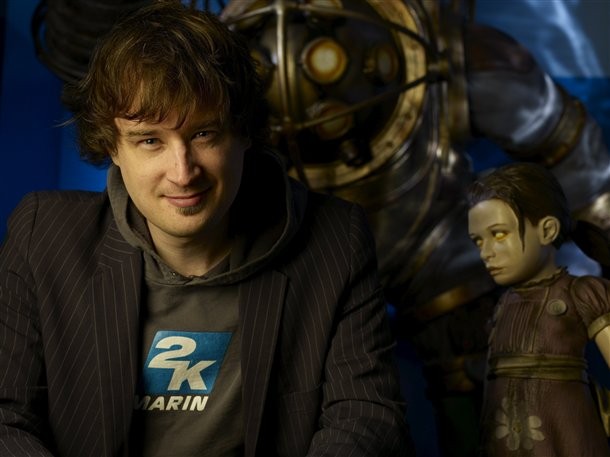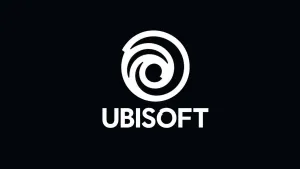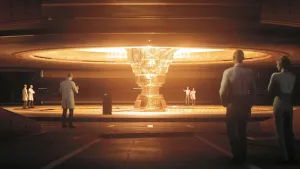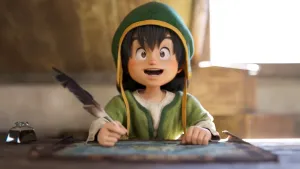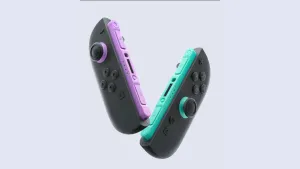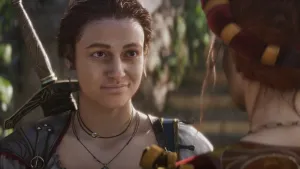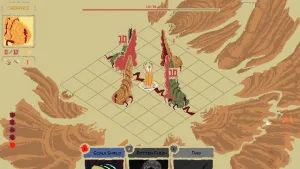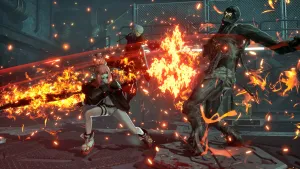Subscribe today to receive the next issue of Game Informer, featuring the Most Anticipated Games of 2026!
BioShock 2 Interview With Creative Director Jordan Thomas
At our hands-on session, Game Informer had the opportunity to chat with 2K Marin’s Jordan Thomas, creative director of BioShock 2. Read on to find out how the sequel came to fruition, why play as a Big Daddy, how multiplayer entered the equation and more.
The first BioShock was a pretty solid game on its own. Why create a sequel?
2K at large felt that Rapture was very fertile and had the possibility of very different stories that come out of the utopian to dystopian fiction there. It’s a setting unlike any other and is something like say, Silent Hill, or any of the other games in which setting is character. There’s a lot of ways in which Rapture can speak to a different protagonist in a different story. For me personally, I think BioShock 2 is a place where we can use what the players know from the first game, the schools of thought that were explored and the philosophical side of the game, and provide contrast, provide a new surprise and a new way of thinking and hopefully take it to a similar extreme.
When choosing a protagonist was the Big Daddy the first to come to mind, or were there other ideas thrown around?
When brainstorming, blue sky is what we call it, everything is entertained. For me, given that I was brought out to help seed the Marin studio from existing 2K Boston and Australia, I really always wanted to center the story around these characters, mostly because in the father daughter dynamic there’s something very primal that you can see instinctively in the first game, regardless of whether you speak the language of the version of the game you’re playing. I thought there was some emotional power there that if you lent it additional humanity could become a powerful motive of its own. I really loved the idea of former Little Sisters as characters. I think that they’ve had a nightmarish and very unique childhood in which there’s nothing like it in any game I could think of. I empathize with them and I know a lot of people who did in the first game. It seemed to me that taking that dynamic and allowing both those characters and the player, the Daddy character, to discover the human trapped inside the monster. It was a good foundation for the story to me.
A few characters from the first BioShock have made appearances or have been referenced in BioShock 2. We have seen Tenenbaum and have heard references to Andrew Ryan. Will we see any other familiar characters?
Definitely. One is Augustus Sinclair who founded Sinclair Solutions, and unlike Fontaine and Ryan he never had aspirations to control the city. He was a very low key guy who liked to walk between worlds, and for him, there was never too dirty a job. He helped to construct Sinclair Solutions home plasmid trials that gave rise to all the splicing in our multiplayer component and he serves as one of the player’s story guides, more or less working for himself, he intends to sell Rapture and all of its miracles to the surface. There are other characters as well. Dr. Sofia Lamb is the new villain who has taken control of Rapture and comes from an opposite school of thought from Ryan.
Would you say you relate to any of Rapture’s characters?
Doctor Sofia Lamb is based on a suite of utilitarian and other sort of altruistic philosophers that I have always found interesting. Her background is based in part on that of John Stuart Mill who was isolated from other children, specifically because his father wanted to groom a genius-level intellect to promote his philosophy. That had some real consequences for poor Mr. Mill and for Sofia Lamb it’s turned her villainous. So I definitely relate to her. She’s sort of a monstrous version of those guys and the likes of me. I certainly relate in part to Sander Cohen from BioShock 1 who is a demented high drama artist who doesn’t want anyone to compromise their vision. I would say I’m less likely to wear rabbit ears, but the tortured artist? You gotta love it.
You have said before that BioShock 2 will give players the opportunity to interact with more non-spliced characters. Can you tell us a little more about that?
I’m very averse to spoiling those because I feel like they have to be lived, but I will say that the player as a Big Daddy with free will is an opportunity for us as designers to answer some of the questions asked by the first game. The super pointy-headed arch nerds will ramble on about the meta-theme of the first game, which spoke to free will in games to some extent, or certainly they would say that it did. In BioShock 2 we want to celebrate the player’s free will so some of the characters you meet need to be human to challenge the player in believable, accessible human ways, otherwise those choices will lack any kind of moral punch. You’ll have more choices which will affect the outcome of the story in BioShock 2 more than in the original. I think that’s a place where I can handover the authorship pen to the player of the game by the end. In the same way hopefully that we do with the player tools, plasmids and weapons.
Speaking of which, can you tell us more about the new plasmids and weapons, upgrades and the new ability to dual-wield?
It is true dual-wield. There is no interference between one hand or the other. You can pull off whatever combinations you wish. We felt that again trying to drive home that the player is running the show in BioShock 2 they needed to be able to pull off whatever sort of acrobatic feats of mastery they favor and brag to their friends. Beyond that the plasmid system has deepened considerably.
The second and third tier of each plasmid don’t just do more damage or last longer, they actually change your tactical spread, for example, Security Command 2. In BioShock 1 you simply hit a splicer with it and it would cause the security system to go against him. In BioShock 2, not only can you do that, but you can summon a friendly security bot from nothing with the second version and then you can direct him around the room by throwing security beacons. It’s sort of command your pet. Then on the elemental front if you want to be electro, you can go all the way to Electro Bolt 3 and you’re rocking the emperor hands.
On the weapons side, the upgrade system has also extended. There’s a third and final upgrade where we want to really revolutionize the way you use the weapons. The drill reflector for example you can spin the drill and deflect incoming projectiles. You can become a melee specialist with that sort of thing.
The first BioShock was set primarily indoors maintaining a level of claustrophobia and fear of never really knowing what’s around the next corner. BioShock 2 offers indoor as well as open underwater exploration with a powerful Big Daddy, how do you maintain that level of fear in this game?
Rapture had to become a much more savage place. Ten years have passed and the Splicers that have managed to survive are much more aggressive, some of them like the Brute Splicer are far stronger and can easily kill the player by themselves. The protagonist of BioShock 1 really wouldn’t have survived BioShock 2. The post-human eco system down there has really pulled out its claws. Beyond that I guess for me as a fiction nerd, I was interested in creating more of a moral dread, where the player of BioShock 2 has the ability to affect the fates of so many other people around him or her and that puts them in the position of, I hope, reflecting on their choices, and as they watch them play out in the story, possibly some of the fear can come from that.
BioShock is a game that’s very accessible and we want to make sure you set your level of difficulty, and it’s extremely challenging, but we want to make sure that people can finish our narrative-driven shooter. We have long, lonely scary sections of BioShock 2 where it’s just you and a flashlight, but at the same time you’re a fairly well-equipped character and the world while threatening is not the same thing like in a Condemned or whatever. The tragedy is as important to us as the fear, so we’ve been putting equal emphasis on both.
The first game was a very solitary experience, which added to the overall gameplay experience. Why add a multiplayer option and how is it being implemented so it doesn’t feel tacked on?
We always felt there were too few games in the multiplayer space in which combinatory potential — plasmids and weapons — allow the player to express his or herself and show off the mastery they’ve managed to accrue. For us, BioShock and the Civil War period within Rapture’s history was this great place to show how splicing made monsters out of normal people and just in the raw kind of joy side of the experience, to make somebody on the other end who is alive and smart and is trying to outwit you realize just how good you are with these systems. It’s sort of about player expression to us since that was one of our core values, multiplayer just naturally followed.
Was there any fan feedback taken from the first game that has been addressed in BioShock 2?
Many of them asked for more character growth opportunities and we spoke about weapons and plasmids and the ways those change. Others asked for greater choice over the way the story ultimately played out and I feel we definitely delivered on that. My goal was to give the player a sense of him or herself and of the world and by the end my aim is that the player has taken control and is starting to realize how central he or she was.
What do you hope players get out of BioShock 2?
It’s an intensely subjective game. My hope is that we were able to surprise them and that they felt that their choices were as important as ours.

Get the Game Informer Print Edition!
Explore your favorite games in premium print format, delivered to your door.
- 10 issues per year
- Only $4.80 per issue
- Full digital magazine archive access
- Since 1991
